The AMD Radeon RX 590 Review, feat. XFX & PowerColor: Polaris Returns (Again)
by Nate Oh on November 15, 2018 9:00 AM ESTCompute & Synthetics
Shifting gears, we'll look at the compute and synthetic aspects of the RX 580. As this is the 3rd time we're seeing 'big' Polaris, there's nothing new to discuss, and with no other design changes we only expect to see the impact of increased clockspeeds.
Beginning with CompuBench 2.0, the latest iteration of Kishonti's GPU compute benchmark suite offers a wide array of different practical compute workloads, and we’ve decided to focus on level set segmentation, optical flow modeling, and N-Body physics simulations.
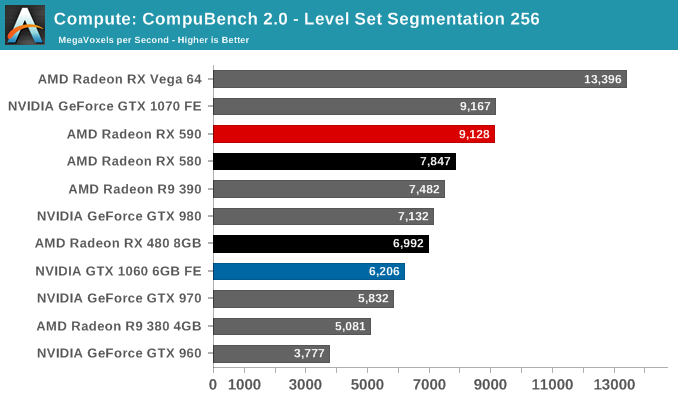

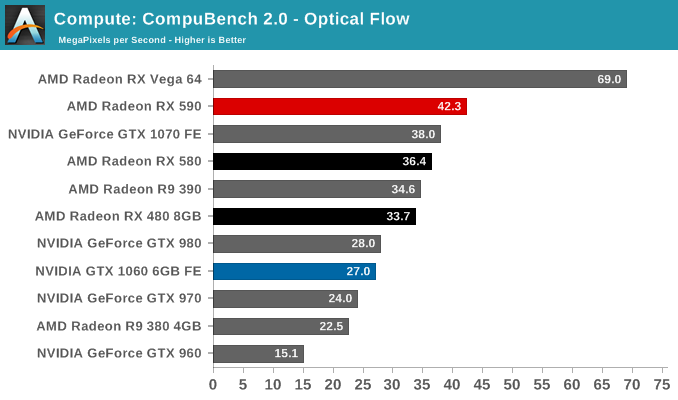
Moving on, we'll also look at single precision floating point performance with FAHBench, the official Folding @ Home benchmark. Folding @ Home is the popular Stanford-backed research and distributed computing initiative that has work distributed to millions of volunteer computers over the internet, each of which is responsible for a tiny slice of a protein folding simulation. FAHBench can test both single precision and double precision floating point performance, with single precision being the most useful metric for most consumer cards due to their low double precision performance.
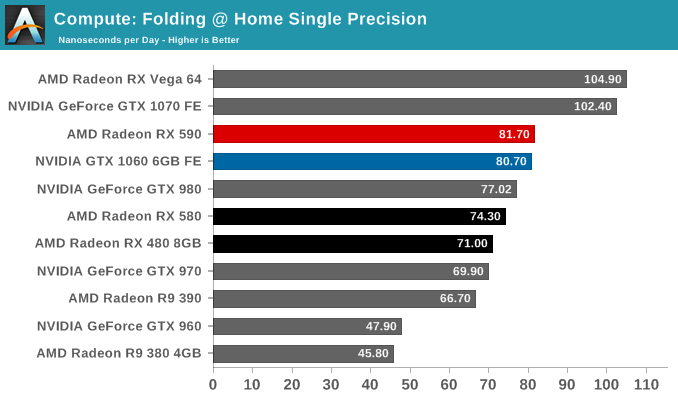
Next is Geekbench 4's GPU compute suite. A multi-faceted test suite, Geekbench 4 runs seven different GPU sub-tests, ranging from face detection to FFTs, and then averages out their scores via their geometric mean. As a result Geekbench 4 isn't testing any one workload, but rather is an average of many different basic workloads.
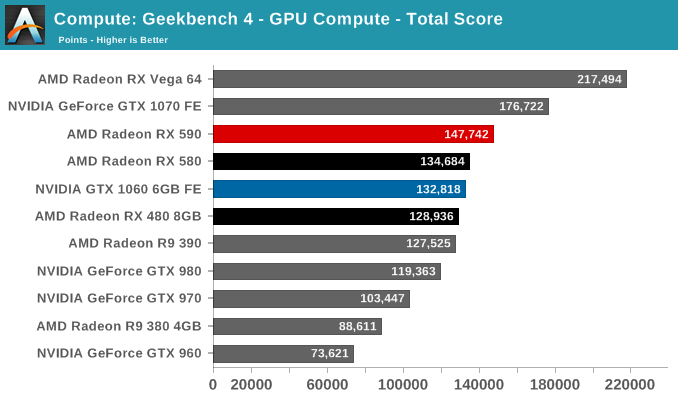
We'll also take a quick look at tessellation performance.

Finally, for looking at texel and pixel fillrate, we have the Beyond3D Test Suite. This test offers a slew of additional tests – many of which use behind the scenes or in our earlier architectural analysis – but for now we’ll stick to simple pixel and texel fillrates.
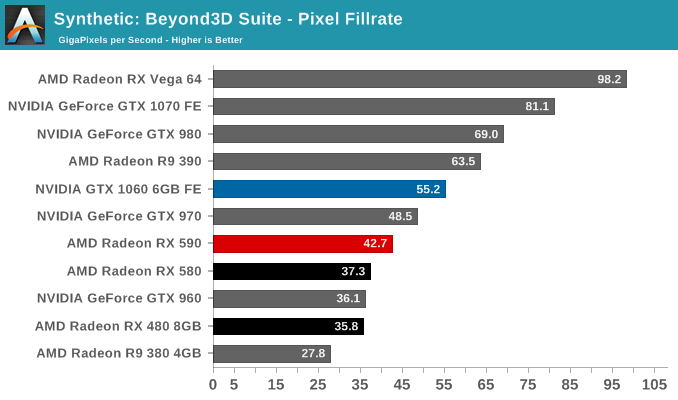











136 Comments
View All Comments
Samus - Friday, November 16, 2018 - link
I donno, you can pickup a used 1070 for under $300 practically anywhere (facebook mp, forums, even ebay) as people upgrade to RTX...which I honestly can't believe people are doing, but hey, they're doing it.Spunjji - Sunday, November 18, 2018 - link
It's really quite astonishing, but great for those of us who can think our way our of a paper bag :DManch - Friday, November 16, 2018 - link
Can't go across the border and bring one back?Targon - Saturday, November 17, 2018 - link
$400-$450 USD for a Vega 64.Falck - Sunday, June 6, 2021 - link
This comment aged well XDOpencg - Thursday, November 15, 2018 - link
Just get something cheap for now and wait for navi in 1 year. Gpu buyers the 10 series window is gone. This next year is going to suck untill navi comes out.Allan_Hundeboll - Thursday, November 15, 2018 - link
GTX1070/Vega 56 is expensive toys. I only play like 2 hours a week, and only need min. FPS to stay above 60. 1440P Ultra settings sure looks pretty, but doesn't really improve my gaming experience considerably compared to 1080P High settings.So I recently replaced my defective R9 280 with a 4GB RX580. Only paid 140$ and sold the game bundle for 20$. My RX580 clocks to 1480/9600Mhz so I'm perfectly satisfied with the performance I got for 120$.
casperes1996 - Thursday, November 15, 2018 - link
How is it an investment? Unless you play Counter Strike professionally, I doubt you get a return on that "investment". how much the "minimum" is depends how much money you have to spare for playing games.PeachNCream - Thursday, November 15, 2018 - link
Investment in this case was probably used in a casual sense rather than to imply there was a more conventional set of investing considerations given to the purchase. It is common knowledge, after all, that computer hardware generally loses value rapidly and computer gaming typically only yields an intangible reward in the form of entertainment.wumpus - Saturday, November 17, 2018 - link
If I wanted an "investment" in the sense of "depriciating slightly slower than fish" I'd wait for something made in 7nm (not the Vega, unless you fit their market exactly). And I suspect nvidia should have something up their sleeve to spoil Navi's party (but at least wait to see if they survive, this latch batch of nvida cards seems to just fail).GPU architecture may improve, but it will take a long time to get a smaller process than TSMC's new 7nm. This is about as close to "future proofing" as you are going to get.